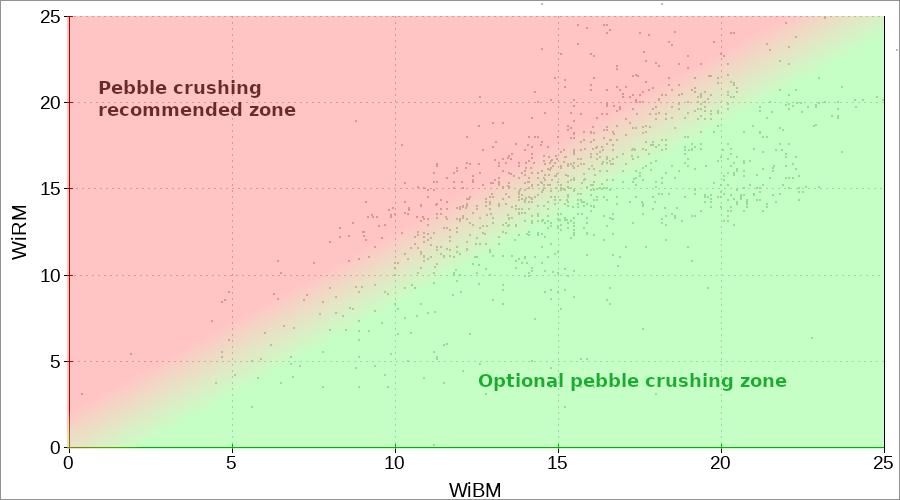Pebble crushing or not?
Contents
Pebble Crushing, or not
The choice of adding a pebble crusher to a circuit requires balancing the following:
- the ratio of rod mill to ball mill work index values
- the desired transfer size of the grinding circuit (what is the model running at)
- energy efficiency of the grinding circuit
Ratio of work indices
If the rod mill (and crushing work index, to a lesser extent) are higher than the ball mill work index, then the circuit will probably require pebble crushing to operate efficiently.

Desired transfer sizes
The transfer sizes displayed by the software are an instruction, and not a prediction. You, the designer, must design a circuit that is capable of achieving the transfer sizes in order for the circuit to operate efficiently. Pebble crushing causes the transfer size in operating plants to coarsen. This means:
- Use a pebble crusher if the model is displaying transfer sizes at the coarse end of the range in the transfer size rules of thumb.
- Do not use a pebble crusher if the model is displaying transfer sizes at the fine end of the range in the rules of thumb.
Circuit efficiency
Most specific energy models predict the overall circuit efficiency (the E_total) is about 5% better with pebble crushing (SABC) versus without (SAB). If the energy consumption is a design priority, then include pebble crushing.
Pebble recycle rate
The software doesn't predict the recycle rate of pebbles, it only predicts the power draw of the black box consisting of the SAG mill and pebble crushers combined. To get an accurate prediction of the pebble flow rate requires using population balance models (such as JK SimMet), but here are some rules of thumb for power based models:
Start with a 15-20% circulating load and adjust as follows:
- If the WiC is less than WiRM, and WiRM is less than the WiBM, then the pebble flow will be low. This is because the rock breakage will "quickly speed through" the rod mill size range (aka, pebble size range) and breakage gets more difficult when particles get to the ball mill size range.
- If your target transfer size is fine, then more pebbles will be recirculating to the SAG until the particles get to the transfer size range.
- SAB circuits usually have lower transfer sizes and lower pebble flow rates than SABC circuits due to the grate configuration in the SAG mill, but run the risk of "choking" on pebbles if the pebble recirculation rate is too low. Power-based models can't see this condition, so always recommend some extra grate panels with pebble ports be in the warehouse, just in case.